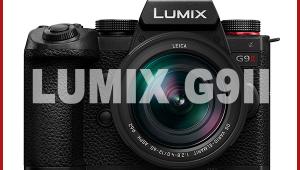Nikon 1 V1 Mirrorless Camera Review
The Nikon V1 camera is designed and sized like a compact camera. It offers a new lens mount system for the new Nikon 1 lenses and offers two viewfinder systems—an EVF (electronic viewfinder) with very high resolution (1.44 million RGB dots), which delivers a very brilliant and crisp image. Alternatively, users can work via a large and bright LCD on the back, which also offers high resolution (921,000 RGB dots). The sensor will switch automatically between viewfinder systems when the photographer looks through the ocular. This differs from the camera’s sibling, the J1, which offers LCD viewing only.





The camera offers manual focusing, but the lenses do not offer focus rings so the user has to change the focus setting with the setup switch in the upper right of the camera back (which is normally the zoom switch when reviewing images). This is similar to the manual focusing found on simple compact cameras and is not very convenient.
The camera is extremely fast: it offers SLR-like focusing speed due to the incorporation of a phase detection focusing system on the image sensor. In addition, it uses a new image sensor, which allows for extremely high continuous shooting rates.
The camera has no function selection control elements on its top: only the ON/OFF switch, the shutter release button, and the additional release button to start video recording are located there. The other function elements are placed on the back. A four-way cursor field and a setup dial are on the back. This setup dial is for menu navigation.
The camera has a newly designed menu, which looks very stylish and is easy to use. It is well arranged and clearly structured, making handling quick and easy within a very short amount of time. A built-in flash system is missing (in contrast to the Nikon J1), although the camera has a special accessory shoe for an optional compact flash or other accessories such as a GPS system or a microphone adapter for better sound recordings in video mode.



Image Quality
Color: The camera showed a nearly perfect saturation in our test chart shot. The mean saturation is 101.1 percent but there are some colors that are accentuated. The red color has a very high yellow rate, which is noticeable in the red fabric of the model’s T-shirt. Blue nuances are boosted by a high magenta rate. Skin tones are reproduced nearly perfectly.
Sharpness: The V1 (and the J1 which was tested at the same time) showed an excellent performance in our resolution tests. The V1 reproduced the test chart with 2179 lines per picture height in its images with 2592 lines per picture height, so that it nearly reaches its nominal resolution. The results from the J1 are nearly the same. The camera showed fine details in the portrait and test box shots. Even the corners of the images are very good.
Noise: The noise results are very good for a compact camera and on an average level for CSC or SLR systems. In lower ISO speed settings (100 to 400) the camera is nearly noise free with very smooth images, despite the small image sensor (CX format). Color noise is visible in images taken with ISO 1600 or 3200. The color noise is consequently filtered and therefore shows some color smear/color clouds in images taken with higher ISO settings.
Image Tech
Image Tech is where we publish web-exclusive lab reports on cameras. To read the reports please go to the Shutterbug homepage at www.shutterbug.com and click on the Image Tech tab on the top navigation bar. New reports are published frequently, so check Image Tech for updates. The following reports are available now:
• Leica X1
• Ricoh GR Digital IV
• Nikon P7100
• Olympus E-P3
• Panasonic FZ48
• Sigma SD1
• Sony SLT-A35
• Sony NEX-C3
Pro
• Very compact CSC system with interchangeable lenses
• Stylish body
• Extremely fast (focusing, burst mode, video modes, etc.)
• Very good resolution results
• Good noise results for a compact camera
Con
• Handling (like manual focusing) is limited by the very compact size and need for additional accessories (flash system)
Lab results and test images by BetterNet, our TIPA-affiliated testing lab. Edited by George Schaub.
- Log in or register to post comments

















































